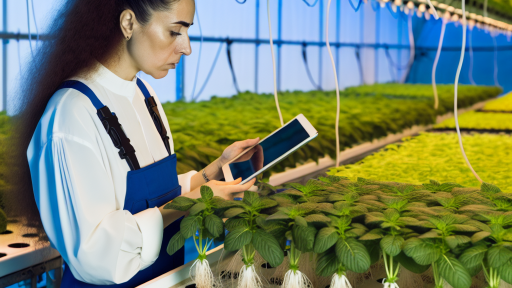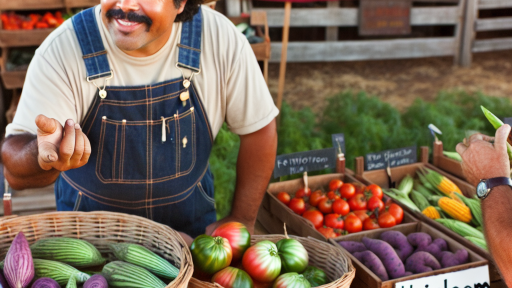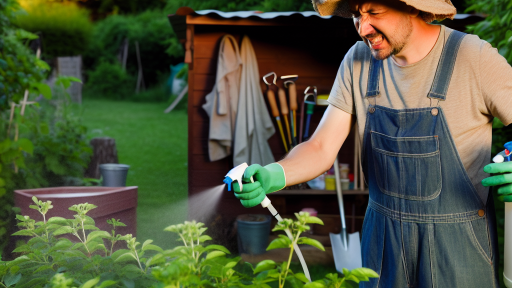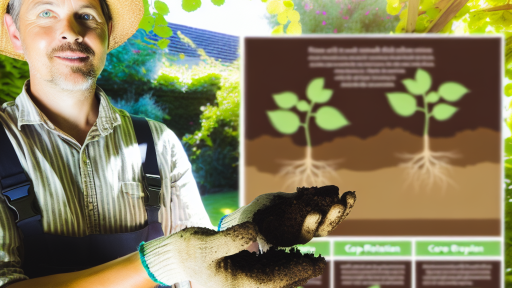Introduction to Seed Saving
Seed saving is an ancient agricultural practice.
It plays a critical role in sustainable farming.
Farmers collect seeds from the best plants each season.
This practice helps maintain genetic diversity.
Additionally, it reduces dependence on commercial seeds.
Seed saving empowers local communities.
Farmers can select seeds based on local growing conditions.
This enhances resilience to climate change.
Moreover, it supports organic farming practices.
Benefits of Seed Saving
Seed saving contributes significantly to sustainability.
First, it allows farmers to save money.
This reduces the need to buy new seeds each year.
Second, it promotes crop adaptation.
Plants that thrive are more likely to produce viable seeds.
Third, seed saving encourages biodiversity.
Transform Your Agribusiness
Unlock your farm's potential with expert advice tailored to your needs. Get actionable steps that drive real results.
Get StartedDiverse crops can withstand pests and diseases better.
Furthermore, it fosters a sense of community resilience.
How to Save Seeds Effectively
Begin with selecting healthy plants for seed saving.
Next, allow seeds to mature fully before harvesting.
Ensure proper drying techniques to prevent mold.
Label your seeds carefully with specific details.
Store seeds in cool, dry places to extend viability.
Additionally, consider seed exchanges to diversify your stock.
Challenges in Seed Saving
Seed saving can pose certain challenges.
Cross-pollination may affect seed purity.
Maintaining proper storage conditions is crucial.
Further, some seeds may require special treatment.
Many farmers might lack access to resources on seed saving.
Education plays a key role in overcoming these challenges.
Understanding Seed Genetics and the Benefits of Heirloom Varieties
Basics of Seed Genetics
Seed genetics refers to the hereditary traits of plants.
These traits influence growth, appearance, and resistance to diseases.
Understanding seed genetics helps farmers select suitable crops for their land.
Moreover, it explains how plants adapt to varying environmental conditions.
Benefits of Heirloom Varieties
Heirloom varieties are open-pollinated seeds passed down through generations.
They offer strong genetic diversity, which enhances resilience against pests and diseases.
In addition, heirloom seeds often boast better flavor than commercially popular varieties.
Many chefs and food enthusiasts prefer heirloom produce for its unique taste.
Cultural and Historical Significance
Growing heirloom varieties connects farmers to their heritage.
This practice fosters a strong sense of community and identity.
Showcase Your Farming Business
Publish your professional farming services profile on our blog for a one-time fee of $200 and reach a dedicated audience of farmers and agribusiness owners.
Publish Your ProfileAdditionally, heirloom crops tell stories about different cultures and regions.
Preserving heirloom seeds safeguards these cultural legacies for future generations.
Environmental Benefits
Heirloom seeds promote sustainable farming practices.
They require fewer chemical inputs, benefiting both soil and water quality.
Furthermore, these plants can thrive in local ecosystems, reducing the need for fertilizers.
Supporting Local Agriculture
Using heirloom seeds supports local farmers and businesses.
Choosing local heirloom varieties promotes food sovereignty and security.
This effort encourages sustainable practices within the community.
Additionally, consumers gain access to fresher, tastier produce.
Essential Tools and Materials Needed for Seed Saving
Basic Tools
Gathering the right tools simplifies the seed saving process.
A clean cloth is essential for drying seeds effectively.
Use scissors for harvesting and trimming seed pods.
A small, sharp knife can also be helpful for some plants.
Labels are vital for marking different seed varieties.
Finally, a journal will help you track your harvest.
Materials for Storage
Choosing the right storage materials increases seed longevity.
Paper envelopes work well for short-term storage.
Glass jars are ideal for long-term preservation.
Ziplock bags can also be used for easy access.
Make sure all materials are clean and dry before use.
Organizational Supplies
Stay organized to ensure efficient seed management.
Consider using a filing system for your seed inventory.
A labeling machine can streamline the process significantly.
Index cards can help you keep track of specific details.
Finally, use a dedicated area in your garden shed for materials.
Insect and Pest Control Tools
Protect your seeds from pests effectively.
Insect netting can shield plants during the growing season.
Natural insect repellents help deter harmful pests.
A vacuum sealer can protect seeds from beetles and rodents.
Lastly, check seeds regularly to ensure they remain pest-free.
Learn More: Pest Management in Edible Landscaping
Step-by-Step Guide to Harvesting Seeds
Preparing for Seed Harvesting
Before harvesting seeds, check the maturity of your plants.
Ensure you have the right tools on hand.
Gather scissors, containers, and paper towels.
Clear an area to work, minimizing distractions.
Wearing gloves can protect your hands and plants.
Harvesting Seeds from Flowers
Choose flowers that have wilted and dried.
Cut the seed pods using scissors.
Collect pods in a container to prevent spilling seeds.
Open the pods gently to release the seeds.
Showcase Your Farming Business
Publish your professional farming services profile on our blog for a one-time fee of $200 and reach a dedicated audience of farmers and agribusiness owners.
Publish Your ProfileSpread the seeds on a paper towel to dry completely.
Collecting Seeds from Vegetables
Wait for your vegetables to overripe or bolt.
Remove seeds from the mature vegetables.
Wash seeds under cool water to remove any residue.
Place the seeds on a paper towel to dry.
Store them in a cool, dark place until ready for use.
Gathering Seeds from Grains
Harvest grains when they turn brown and dry.
Cut the stalks and gather them into bundles.
Threshed grains can be collected by shaking the stalks.
Separate any chaff from the seeds.
Store the cleaned seeds in airtight containers.
Storing Seeds Properly
Ensure seeds are completely dried before storage.
Use paper envelopes or glass jars for storage.
Label each container with the plant name and date.
Store seeds in a cool, dark, and dry location.
Check periodically for signs of moisture or pests.
Testing Seed Viability
Before planting, test seed viability for best results.
Place a few seeds on a damp paper towel.
Seal the towel in a plastic bag for humidity.
Wait a week and see how many seeds sprout.
Use this method to determine which seeds to plant.
Delve into the Subject: Overcoming Common Challenges In Container Gardening
Methods for Drying and Storing Seeds
Importance of Seed Viability
Seed viability directly impacts the success of future crops.
Healthy seeds ensure higher germination rates.
Storing seeds properly extends their lifespan.
Steps for Drying Seeds
Begin by harvesting seeds at the right time for maximum quality.
Choose a dry, warm area to dry the seeds.
Spread seeds on a clean, flat surface in a single layer.
Use screens or paper towels to allow airflow.
Check the seeds daily for moisture and possible mold.
Dry until seeds snap instead of bending, indicating readiness.
Storing Seeds for Longevity
Use airtight containers to protect seeds from moisture and pests.
Glass jars or Mylar bags work well for storage.
Add silica gel packets to absorb any residual moisture.
Label containers with the seed type and harvest date.
Store seeds in a cool, dark, and dry place.
Monitoring Seed Viability
Regularly check stored seeds for signs of deterioration.
Perform a germination test on old seeds before planting.
Keep records of seed viability tests for reference.
Sharing and Trading Seeds
Consider sharing seeds with local farmers and gardeners.
Showcase Your Farming Business
Publish your professional farming services profile on our blog for a one-time fee of $200 and reach a dedicated audience of farmers and agribusiness owners.
Publish Your ProfileParticipating in seed exchanges fosters community and sustainability.
Always inform others of the seed type and storage history.
You Might Also Like: Sustainable Urban Farming Methods Explained
Best Practices for Labeling and Organizing Saved Seeds
Importance of Proper Labeling
Labeling your saved seeds prevents confusion during planting.
It ensures you know the specific variety and its characteristics.
Moreover, proper labels help you track germination rates.
Choosing the Right Labels
Select durable materials that withstand outdoor conditions.
Waterproof labels resist damage from rain and humidity.
Consider using environmentally friendly options to support sustainability.
Essential Information to Include
Each label should state the variety name clearly.
Include the year the seeds were collected for future reference.
Furthermore, note the location where the seeds were grown.
Additional details can enhance tracking, such as pest experiences.
Storage Solutions for Organized Seeds
Store seeds in a cool, dark place to maintain viability.
Use airtight containers to protect them from moisture.
Label each container to ensure easy identification.
Maintaining an Inventory
Keep a detailed inventory of your saved seeds.
Include information on planting dates and previous harvests.
This practice aids in planning for future planting seasons.
Periodic Check and Maintenance
Regularly check your seed inventory for any damage.
Replace outdated seeds according to their viability timeframes.
Finally, revisit labeling methods as needed to enhance clarity.
See Related Content: Hydroponic Systems For City Gardeners
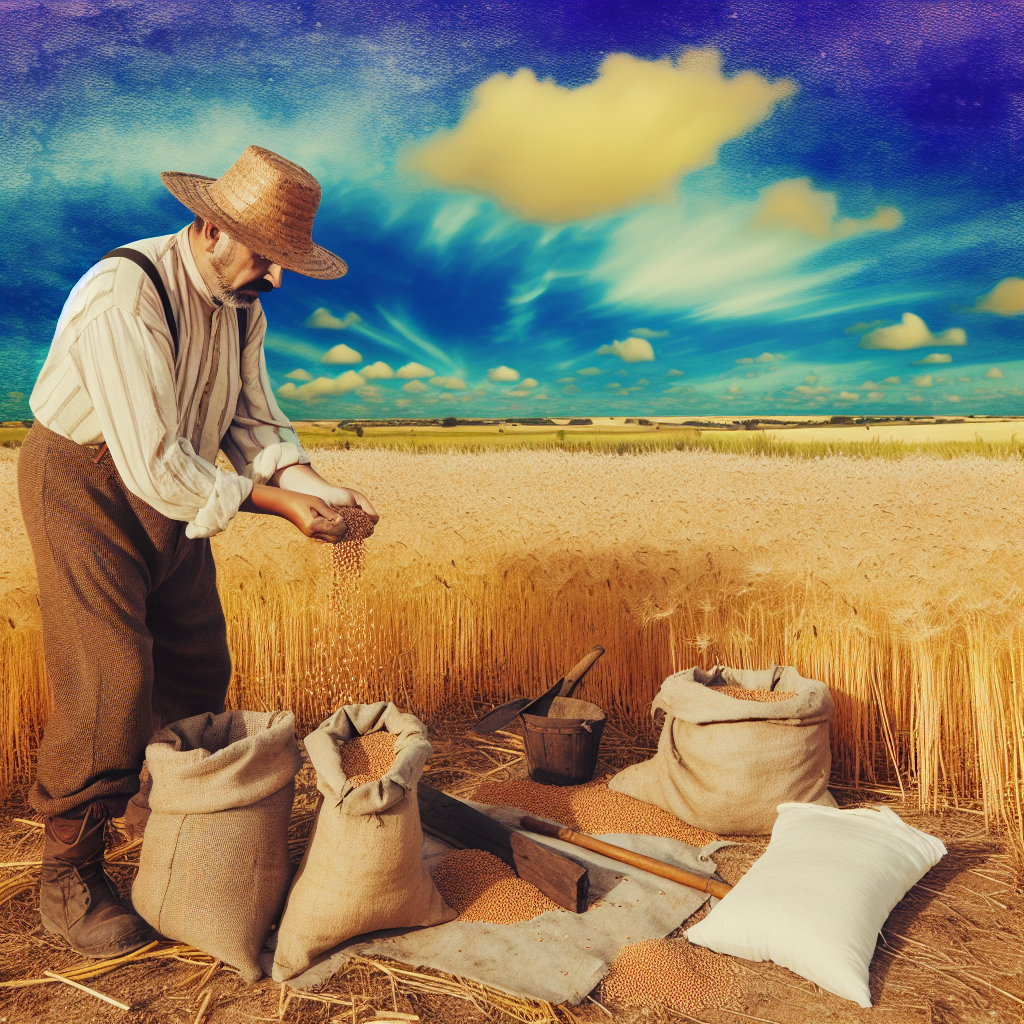
Common Mistakes to Avoid When Saving Seeds
Lack of Proper Storage
Many gardeners overlook the importance of storage conditions.
Humidity and temperature affect seed viability significantly.
Ensure you store seeds in a cool, dry place.
Using airtight containers helps keep moisture away.
Consider adding desiccants to absorb excess humidity.
Incorrect Labeling
Labeling seeds accurately prevents confusion later on.
Include the variety name and date of harvest on labels.
Use waterproof materials for your labels to ensure durability.
This practice helps maintain organization over time.
Saving Seeds from Hybrid Varieties
One common mistake is saving seeds from hybrid plants.
Hybrids often do not produce true-to-type offspring.
Focus on heirloom or open-pollinated varieties for seed saving.
Ignoring Local Conditions
Ignoring the particular conditions of your growing area can be detrimental.
Consider your soil type, climate, and local pests when selecting seeds.
Adapt your seed-saving strategy to fit these variables.
Saving Seeds from Diseased Plants
Do not collect seeds from plants that show signs of disease.
Disease can carry over to the next growing season through seeds.
Showcase Your Farming Business
Publish your professional farming services profile on our blog for a one-time fee of $200 and reach a dedicated audience of farmers and agribusiness owners.
Publish Your ProfileInspect your plants carefully before saving any seeds.
Neglecting to Test Seed Viability
Testing seed viability should never be overlooked.
Consider conducting a germination test using a damp paper towel.
This step ensures the seeds you save are healthy and productive.
Exploring Community Seed Banks and Seed Swaps for Biodiversity
Benefits of Community Seed Banks
Community seed banks preserve local plant varieties.
They serve as critical resources for farmers.
These banks help maintain genetic diversity.
Additionally, they promote cultural heritage.
Everyone can participate in their establishment.
People interested in sustainable farming can collaborate.
This collective effort strengthens community ties.
How Seed Swaps Work
Seed swaps create opportunities for gardeners to exchange seeds.
Participants bring seeds from their own collections.
They can also share knowledge about successful cultivation.
This interactive process fosters community involvement.
People learn about heirloom and native varieties.
It encourages biodiversity in local agriculture.
Consequently, these events contribute to food security.
Getting Involved in Local Initiatives
Many cities host seed exchange events regularly.
Organizations like Grow a Seed offer resources and support.
Community gardens often hold seed swap days.
Joining gardening clubs can facilitate connections.
These groups frequently organize educational workshops.
Participants learn valuable tips for seed saving.
Ultimately, being involved promotes sustainable practices.
Benefits of Seed Saving for Local Ecosystems and Food Security
Enhancing Biodiversity
Seed saving enhances local biodiversity significantly.
This practice allows farmers to preserve native plant varieties.
In turn, these varieties contribute to a resilient ecosystem.
Biodiversity increases soil health and pest resistance.
Improving Food Security
Seed saving directly supports food security in communities.
It allows farmers to grow crops suited to their local conditions.
Moreover, it reduces dependency on commercial seed suppliers.
Farmers can ensure a steady supply of food by saving seeds.
Strengthening Local Economies
By saving seeds, farmers invest in their local economies.
They reduce costs associated with purchasing new seeds annually.
This practice encourages the circulation of local resources.
Consequently, it fosters sustainable agricultural development.
Preserving Cultural Heritage
Seed saving helps maintain traditional agricultural practices.
It embodies the knowledge passed down through generations.
Farmers can cultivate varieties that reflect their cultural identity.
Showcase Your Farming Business
Publish your professional farming services profile on our blog for a one-time fee of $200 and reach a dedicated audience of farmers and agribusiness owners.
Publish Your ProfileThus, seed saving promotes a connection to ancestral farming methods.
Mitigating Climate Change Effects
Seed saving contributes to climate change resilience.
By maintaining diverse seed stock, farmers adapt to changing climates.
This adaptability helps ensure food production stability.
Additionally, it minimizes the impact of extreme weather on crops.

